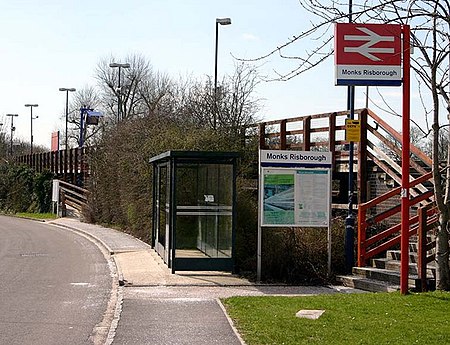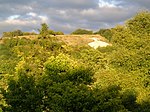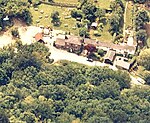Monks Risborough railway station
Buckinghamshire building and structure stubsDfT Category F2 stationsFormer Great Western and Great Central Joint Railway stationsPrinces RisboroughRailway stations in Buckinghamshire ... and 4 more
Railway stations in Great Britain opened in 1929Railway stations served by Chiltern RailwaysSouth East England railway station stubsUse British English from May 2015

Monks Risborough railway station is a small, single platform railway station of the village of Monks Risborough in Buckinghamshire, England. The station is between Princes Risborough and Little Kimble stations on the branch line between Princes Risborough and Aylesbury. Passenger services from this station are operated by Chiltern Railways.
Excerpt from the Wikipedia article Monks Risborough railway station (License: CC BY-SA 3.0, Authors, Images).Monks Risborough railway station
Crowbrook Road,
Geographical coordinates (GPS) Address Nearby Places Show on map
Geographical coordinates (GPS)
| Latitude | Longitude |
|---|---|
| N 51.736 ° | E -0.829 ° |
Address
Crowbrook Road
Crowbrook Road
HP27 9LW
England, United Kingdom
Open on Google Maps









